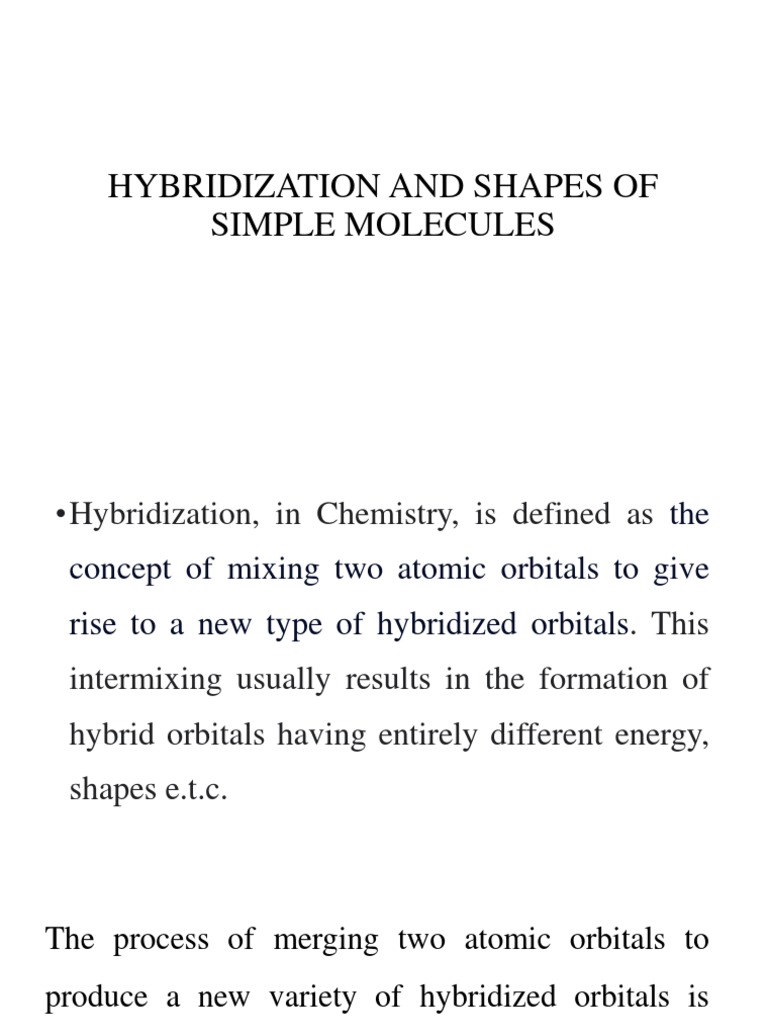Molecular structure and hybridization are foundational concepts in the realm of chemistry, encapsulating the complex interplay of atoms that gives rise to the diverse array of substances we encounter in our daily lives. At a glance, molecules might seem like mere collections of atoms; however, their structures and the hybridization of their constituent atoms reveal the intricate forces that dictate an array of physical and chemical properties. Understanding these concepts can provide insight into not only the behavior of substances but also into the very fabric of life itself.
The molecular structure of any compound refers to the spatial arrangement of its atoms, the nature of the bonds between them, and the resultant three-dimensional shape that these relationships engender. When we delve into this topic, we cannot overlook the importance of the chemical bond, as it is the key to molecular integrity. Bonds themselves can be categorized into several types, prominently ionic, covalent, and metallic bonds, each exhibiting unique characteristics based on the types of atoms involved and how they interact with one another.
Among these bonds, covalent bonds are particularly noteworthy. They occur when atoms share electron pairs, leading to a more stable electron configuration. The nature of this sharing determines whether the bond is polar or nonpolar, influencing myriad properties including solubility, boiling, and melting points. In a polar covalent bond, for instance, electrons tend to be drawn closer to one atom than another, resulting in a dipole moment. . With this understanding, we can appreciate how structural nuances at the molecular level translate into macroscopic properties – this is where molecular structure truly shines.
Building on this foundation, we encounter hybridization, a concept developed to explain the geometry of molecular bonding and the reasons for certain bond angles that deviate from what classical theories might suggest. Hybridization involves the mixing of atomic orbitals to form new hybrid orbitals, which better accommodate the bonding requirements of molecules. By doing so, hybridization aligns with observed molecular shapes, significantly enriching our understanding of chemical behavior.
The concept of hybridization reveals itself predominantly through the work of chemists like Linus Pauling, who elucidated the idea while developing the valence bond theory. In this framework, the commonly known types of hybridization include sp, sp², and sp³, each denoting the combination of specific atomic orbitals:
- sp Hybridization: This involves the mixing of one s orbital with one p orbital, yielding two equivalent sp hybrid orbitals oriented linearly, at a bond angle of 180 degrees. Molecules like acetylene (C₂H₂) exemplify sp hybridization, demonstrating a linear structure that influences its reactivity and interaction with other substances.
- sp² Hybridization: Through the amalgamation of one s orbital with two p orbitals, three sp² hybrid orbitals are formed, arranged in a trigonal planar configuration with bond angles approximating 120 degrees. Ethylene (C₂H₄) serves as a notable example, where the geometry plays a pivotal role in its bonding characteristics, especially through the pi bond formed by the unhybridized p orbitals.
- sp³ Hybridization: Here, one s orbital combines with three p orbitals to create four equivalent sp³ hybrid orbitals that are tetrahedral in orientation, with bond angles of approximately 109.5 degrees. Methane (CH₄), with its characteristic tetrahedral shape, embodies this hybridization, revealing a molecule that is remarkably stable and exhibits uniform reactivity.
As we delve deeper into molecular structures and their hybridization, we unearth fascinating aspects that elucidate why certain molecules possess distinct characteristics. For instance, the bond length and bond strength correlate strongly with the type of hybridization involved. sp hybrids tend to form stronger bonds compared to sp² and sp³, thus influencing molecular stability and the overall reactivity of compounds.
Furthermore, the notion of resonance further complicates our understanding of molecular structures. Resonance occurs when a molecule cannot be adequately represented by a single structure alone; instead, multiple contributing structures, or resonance forms, are required to depict the delocalization of electrons. This phenomenon is notably prominent in benzene, where the alternating single and double bonds between carbons are not fixed but rather are shared across the entire ring structure, enhancing its stability and reactivity.
The implications of these concepts extend far beyond the confines of a chemistry textbook. Molecular structure and hybridization impact virtually every aspect of life, from the receptors in our cells that respond to chemical signals to the development of new materials that push the boundaries of technology. Moreover, the understanding of molecular interactions is pivotal in addressing contemporary issues such as drug design, environmental degradation, and the pursuit of renewable energy sources.
In conclusion, molecular structure and hybridization are indispensable components of molecular chemistry that provide a clearer lens through which to view the natural world. By deciphering these intricate relationships, we gain not only a greater appreciation for the complexities of life and matter but also the tools necessary to innovate solutions to pressing global challenges. Through this lens, the seemingly mundane becomes extraordinary, revealing a tapestry of connectivity and influence that underscores the beauty of chemistry in our lives.
